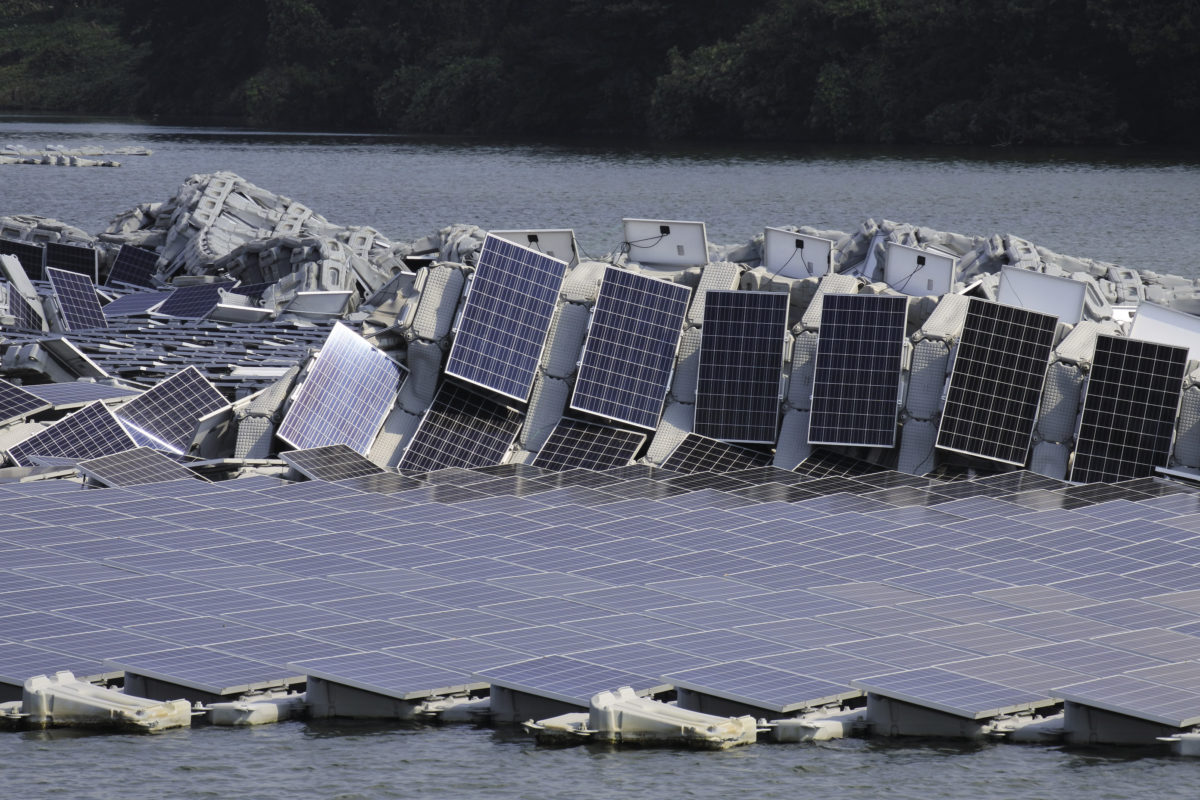From pv magazine USA
Renewable energy projects, especially solar installations, are seeing steep insurance premium cost increases due to industry disruptions caused by extreme weather events, according to research by Norton Rose Fulbright.
The market for property and casualty insurance for solar projects has been hardening over the past 18 months, with premiums increasing by as much as 400% over that time frame. Soft markets entail easier underwriting, increased coverage capacity, and more preferential terms. Hard markets are defined by stricter underwriting, reduced capacity, and generally worse terms. Insurance markets are broadly defined by cycles of soft markets, followed by hard markets, before cycling back.
Outside of increased premiums, the Fulbright report identifies four additional challenges facing the market:
- Higher deductibles – deductibles have shifted to much higher dollar amounts, and are now typically 5% of the total asset value for catastrophic perils. Historically, deductibles were capped at either $10,000 or 2% of the total asset value, with 5% considered as an extreme.
- Some insurers have introduced natural catastrophe sub-limits. These are extra limitations in an insurance policy’s coverage for certain losses, such as severe convective storms, hail, tornados and straight-line wind. These sub-limits set a maximum to cover a specific loss.
- Most insurers have introduced specifically nuanced policy restrictions, like microcracking exclusions. This means that any cost for microcrack testing falls on the insured, who must demonstrate that more than a certain percentage or number of individual solar modules suffered damage before the policy will respond.
- The market is seeing inconsistency among insurers regarding policy terms, including terms associated with microcracking, sub-limits, contingent coverages and deductibles.
Traditional insurance holdups for solar projects have centered around long payoff times for earthquake and hurricane damage. While all instances of extreme weather have played their part in the market’s recent hardening, wildfires and hail are playing hold an especially destructive role.
One of the first major solar insurance market disruptions occurred in Texas in 2019, when an especially violent hailstorm in Pecos County damaged more than 400,000 panels at the 178 MW Midway Solar Project. And market issues were compounded during the 2020 wildfire season, which proved to be an especially bad one for California. Three projects across the state filed significant fire damage claims: two in Rosamond and one in Bakersfield. The Bakersfield project suffered extensive damages and faces an anticipated $25-$28 million in insured losses.
Potential solutions
Some insurers, like Renewable Guard Insurance Brokers, have begun to offer specific hail insurance programs. Known as parametric insurance, these policies trigger coverage when a measurable hailstorm event occurs which exceeds a threshold. The trigger for coverage and payout is determined by the size of the largest hail that falls on the solar project site.
One advantage provided by such a policy is their fast payout times. Payout times have always been a hindrance of natural disaster insurance for solar projects, even before the catastrophic events that have hardened the market. Renewable Guard claims payment can occur between one week and 10 days, without requiring traditional on-site claims adjustments.
***
Learn more about the dangers that hail can cause to solar projects and how to mitigate risk by registering for our new pv magazine webinar, “Can your solar project weather a hailstorm?” Follow this link to register.
This content is protected by copyright and may not be reused. If you want to cooperate with us and would like to reuse some of our content, please contact: editors@pv-magazine.com.




Ironic and depressing example of pushing a feedback loop the wrong way. If we actually managed to do solar right, it would reduce dependence on fossil fuels, which would reduce climate destabilization, which would reduce catastrophic weather events. Here is yet another example where individuals trying to do less harm have to personally bear ever more cost and no one has their backs.
I would love to see the policy conversation move from individual incentives and disincentives to this widespread structural problem. Are any governments or think tanks looking explicitly at the general problem of incentivizing individuals to solve tragedies of the commons? A single-subject subsidy here and there is a step in the right direction, but those seem isolated rather than coordinated as part of a broader social strategy.
Thanks Tim for the astute reporting! This is such an important issue in our industry. There are ways to help asset owners expediate the claims process.
According to restoration expert Solar Support, there is huge value in documenting every aspect of the site that appears to have been affected, even if damage appears to be minimal.
-Take pictures, at least four or five for everything that will require attention;
-Note components that may no longer be in production and determine which OEMs will play significant roles moving forward.
For sites with more extensive damage, grid-by-grid drone flyovers are valuable to map the level of destruction. Insurance companies often cover drone inspections because they want to know what they’re dealing with just as much as you do. Solar Support actually recommends both standard and infrared views of the entire site; thermal problems invisible to the naked eye show up in IR.
While time-consuming, scrupulous documentation from the start prevents surprises during plant restoration and can help stave off change orders down the line.
Transparency is key to minimize revenue loss throughout the process by ensuring that every stakeholder — the asset owner, operator, insurance provider, and all contractors — knows exactly where things stand at any moment.